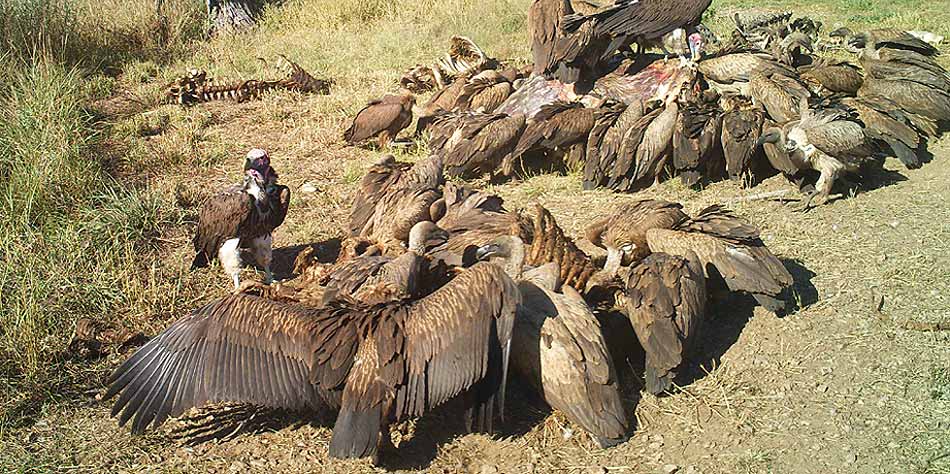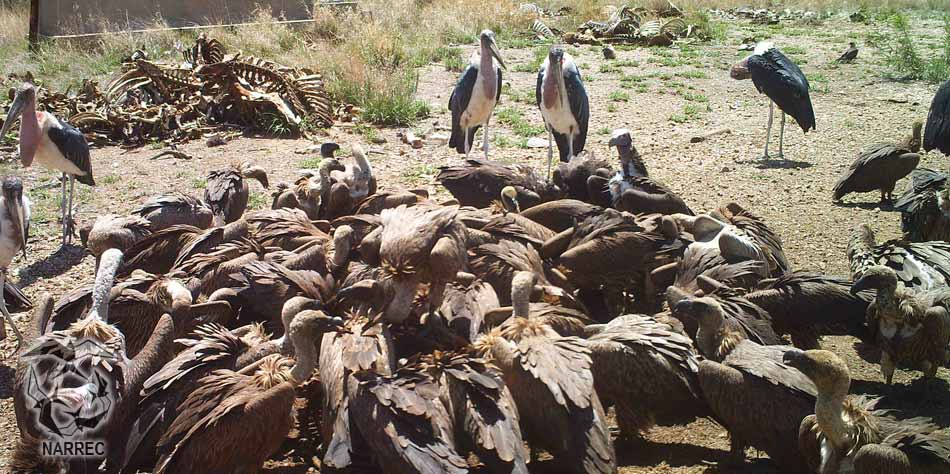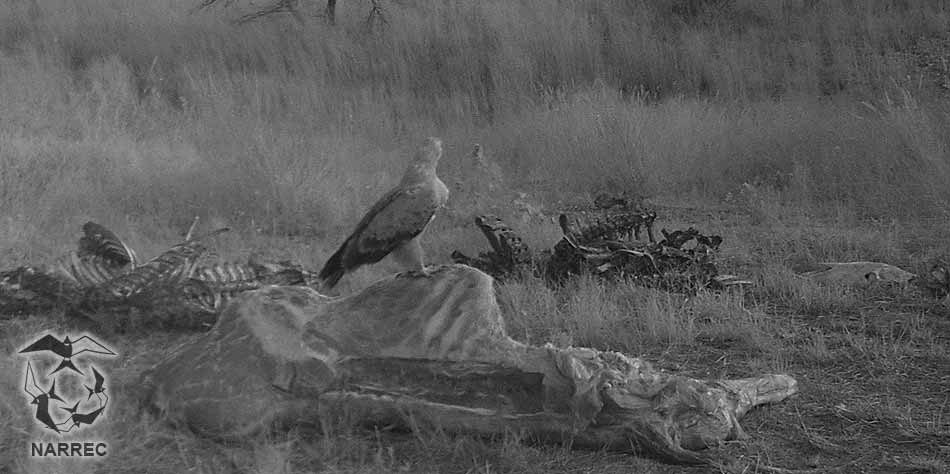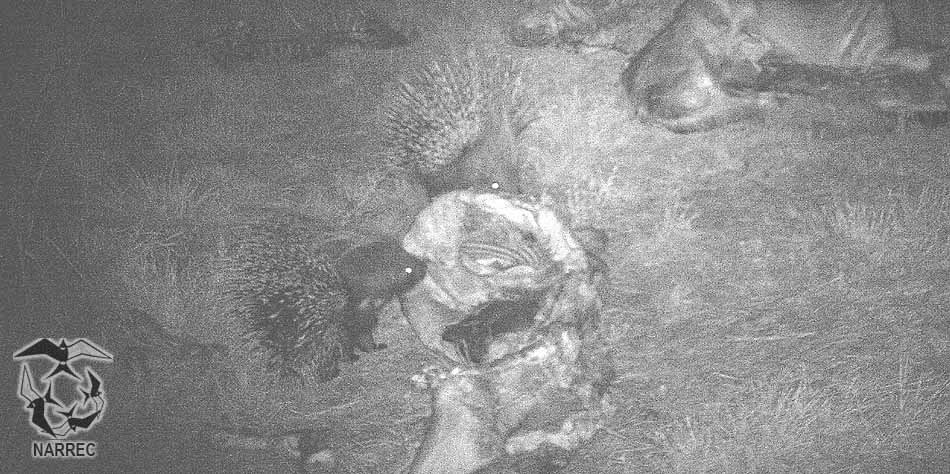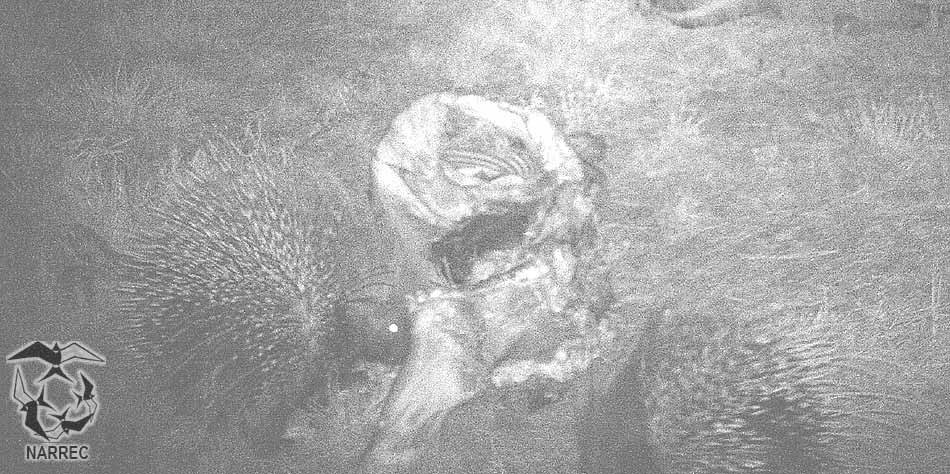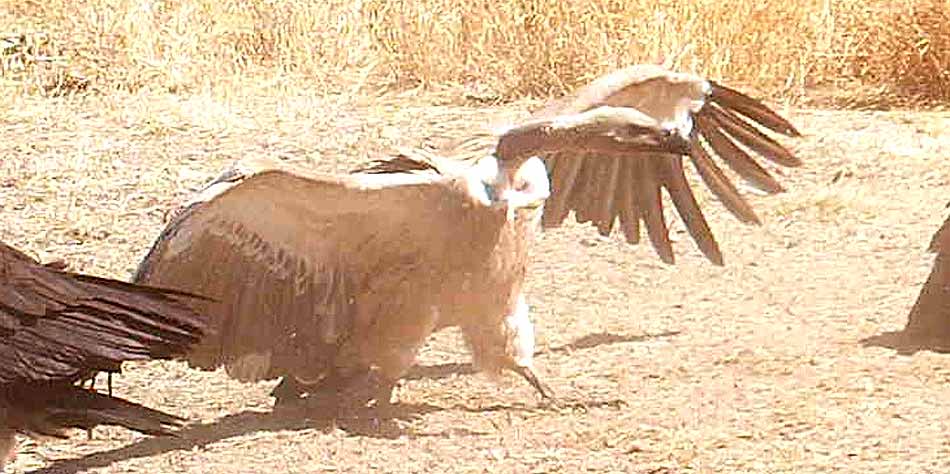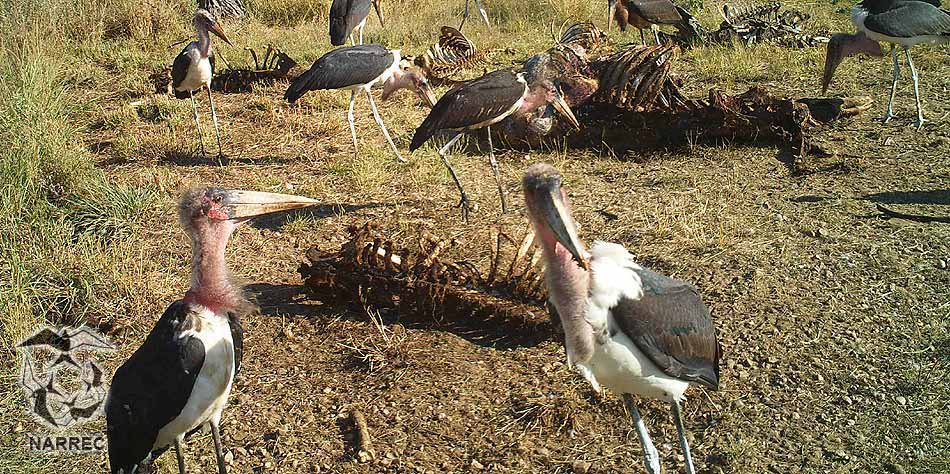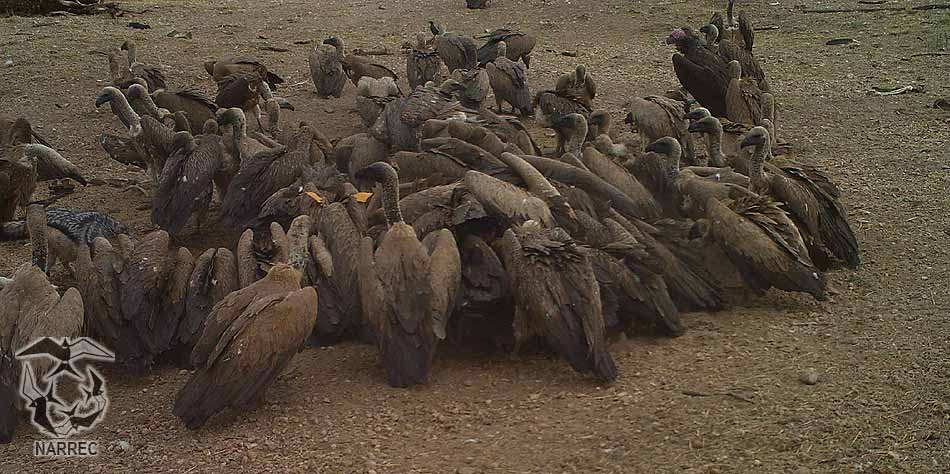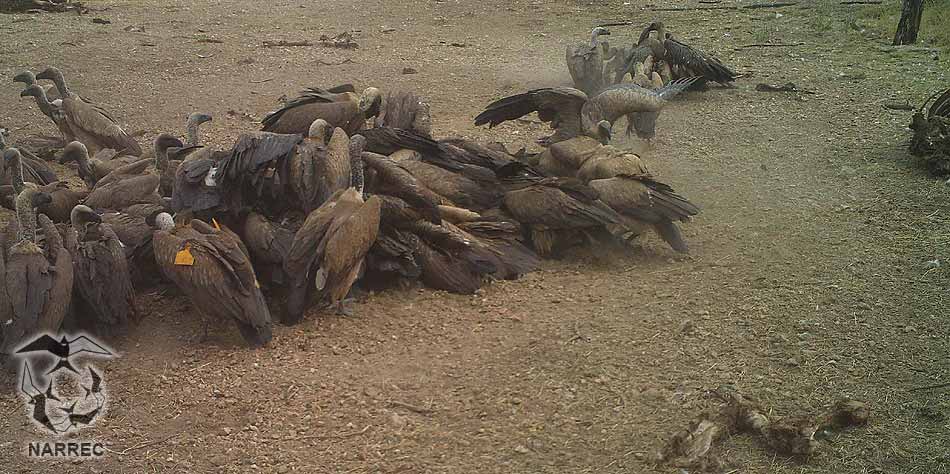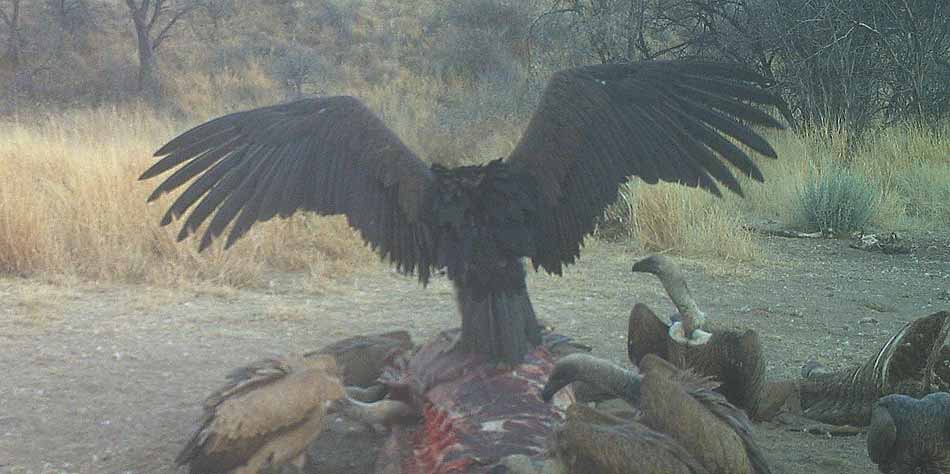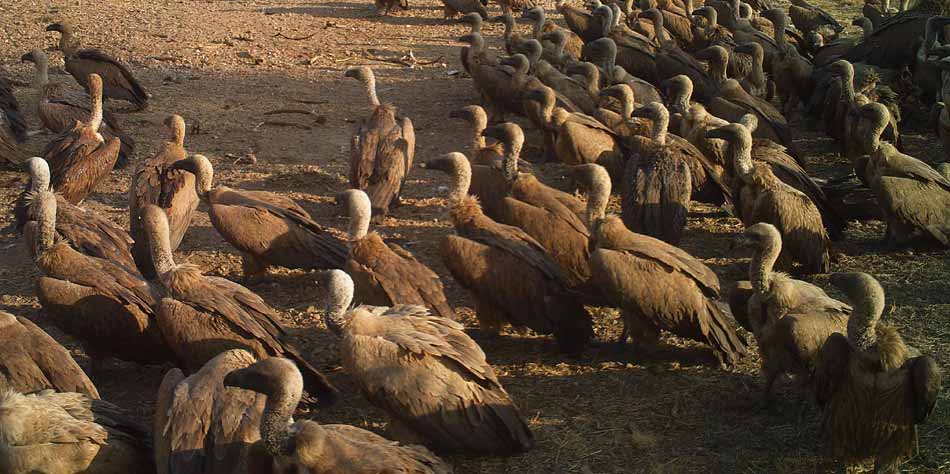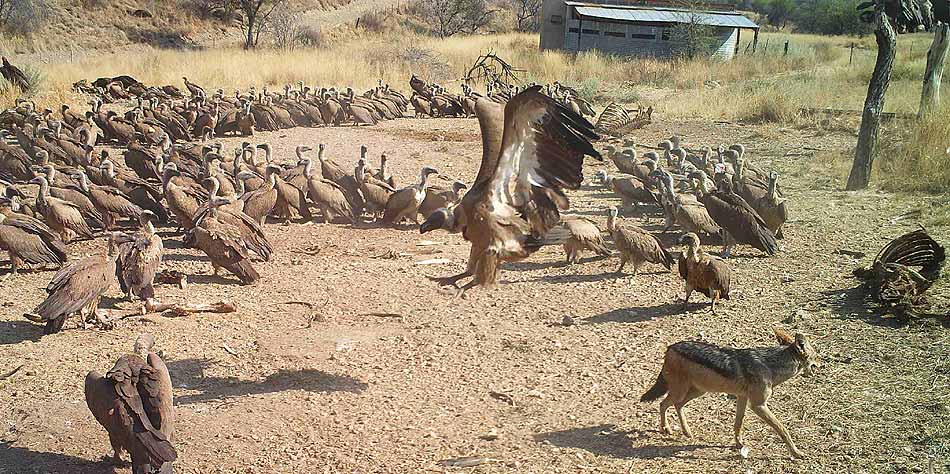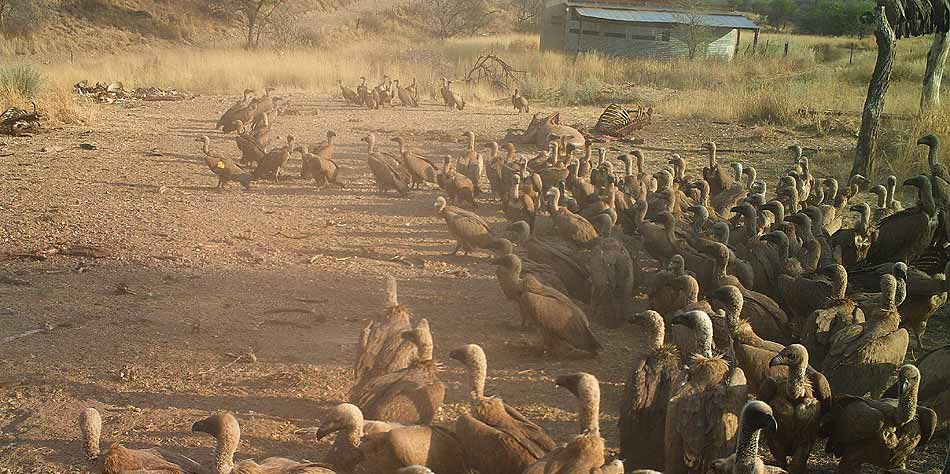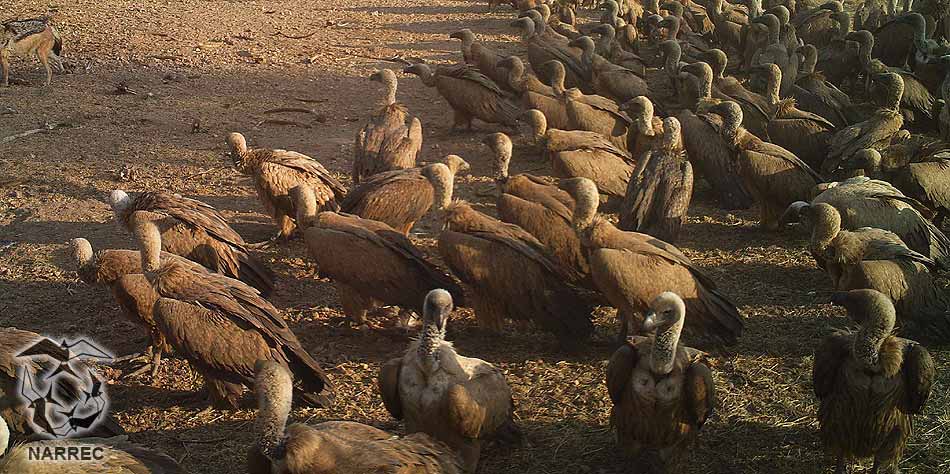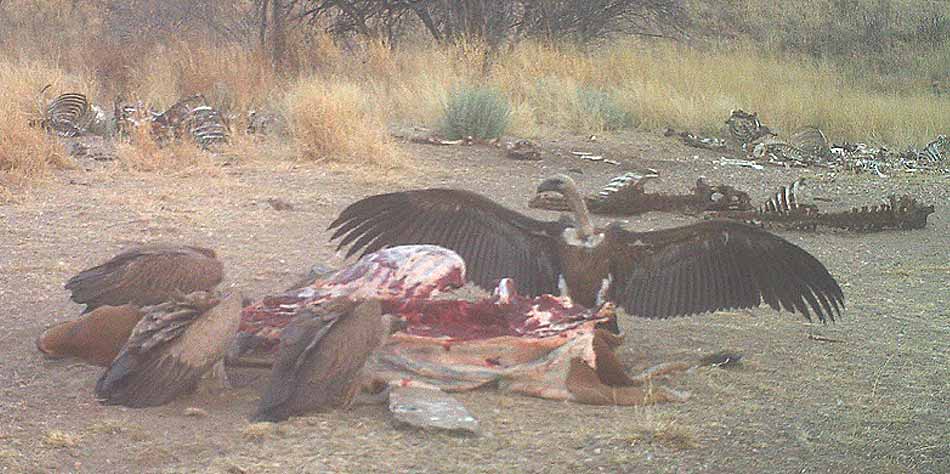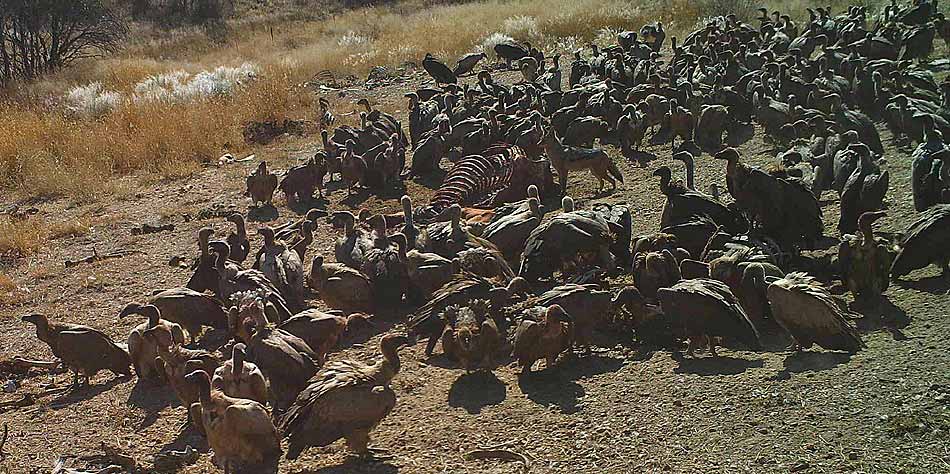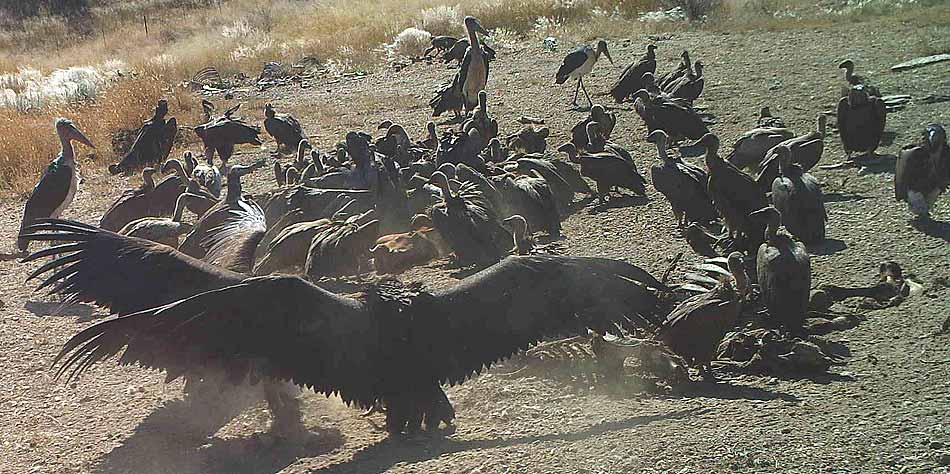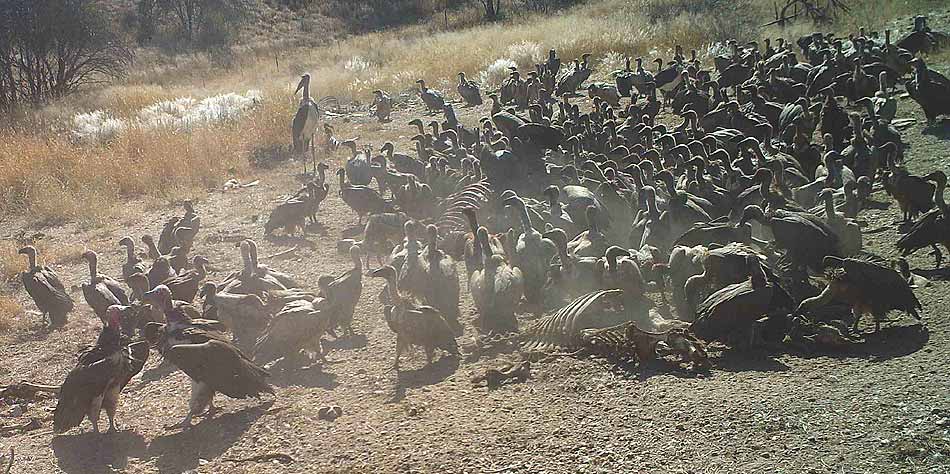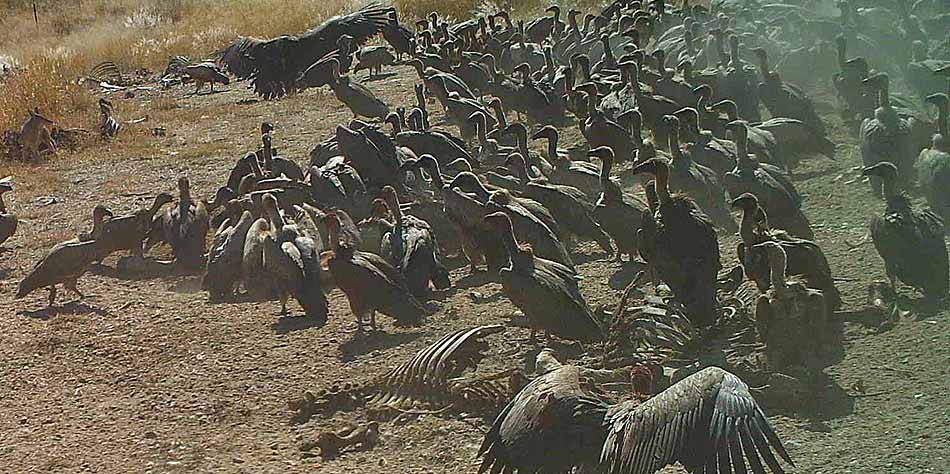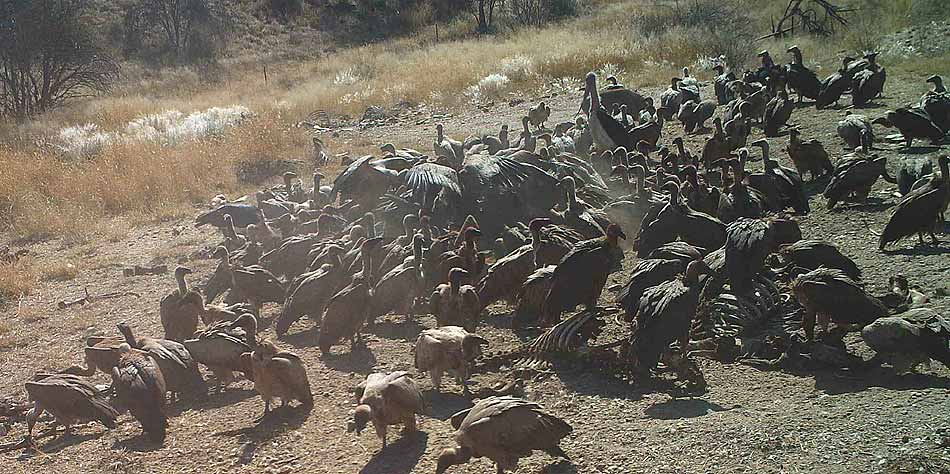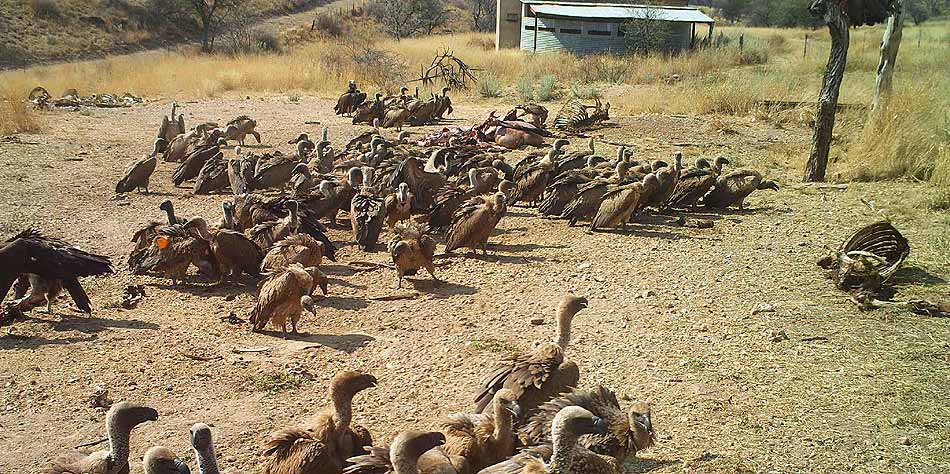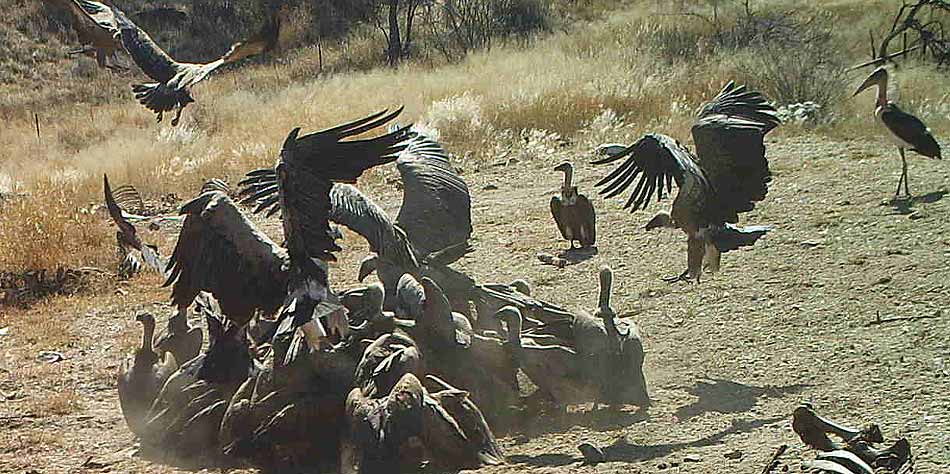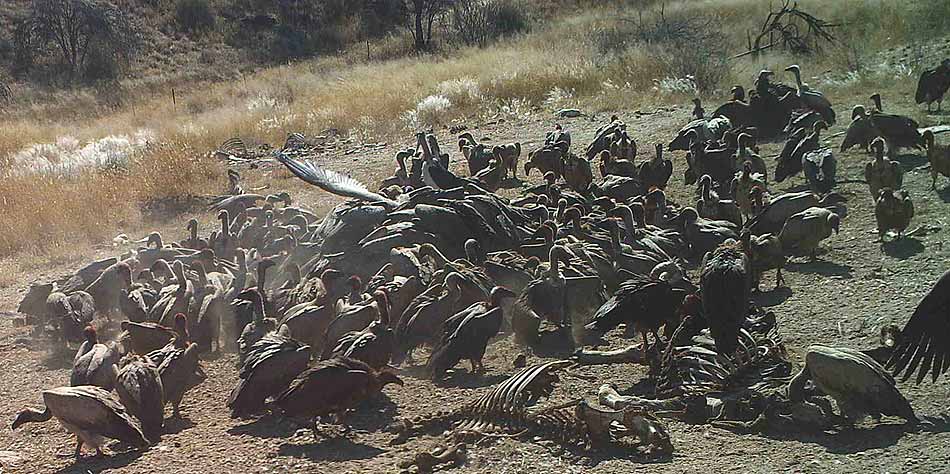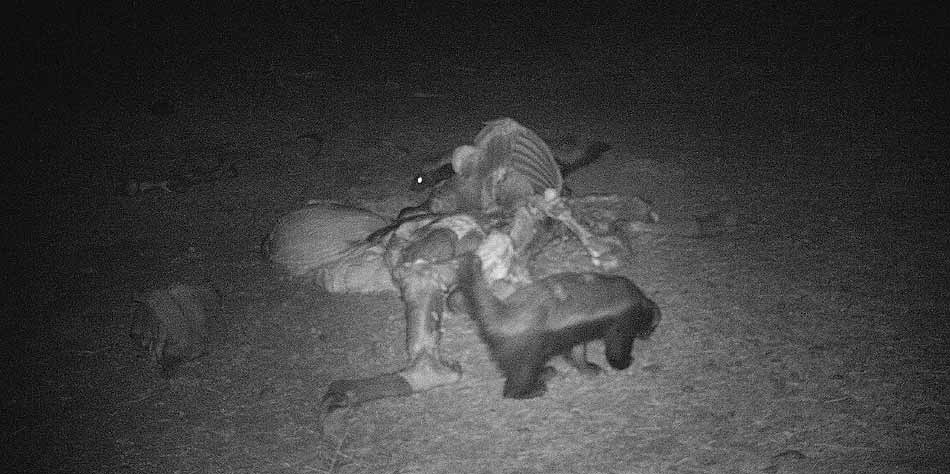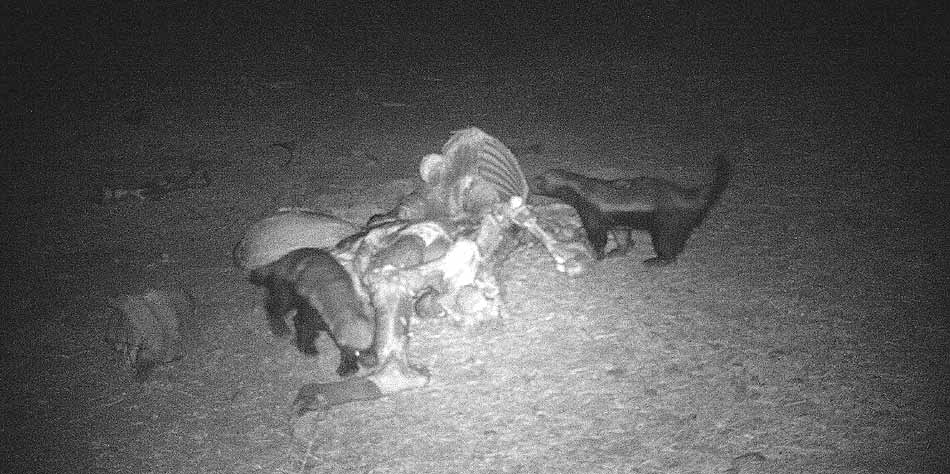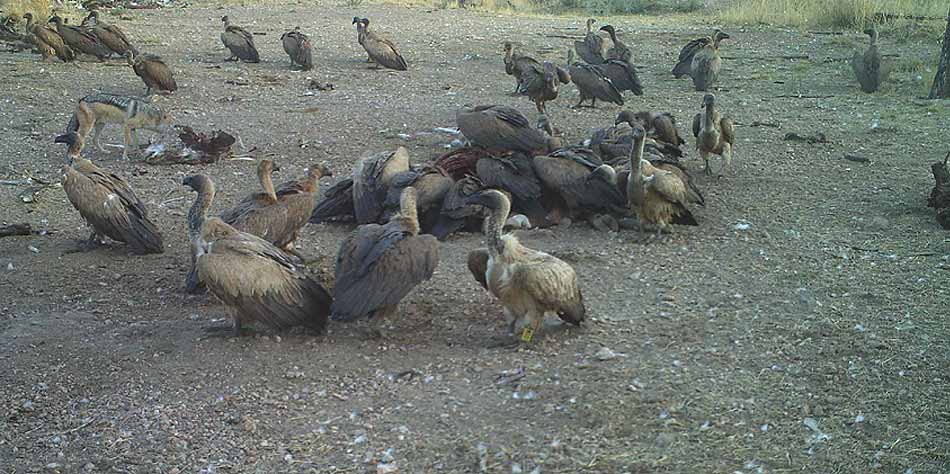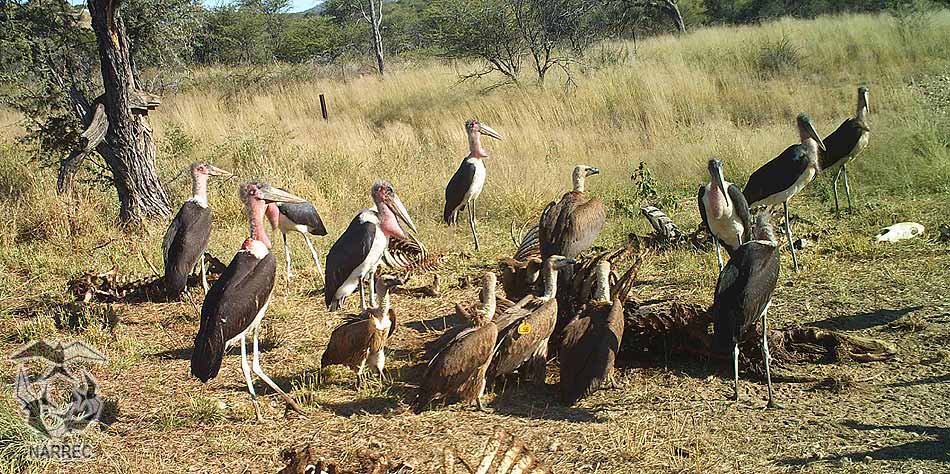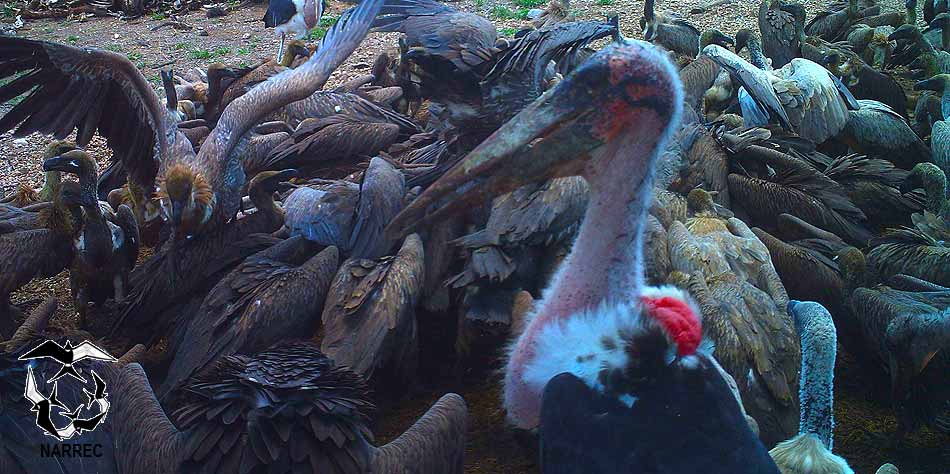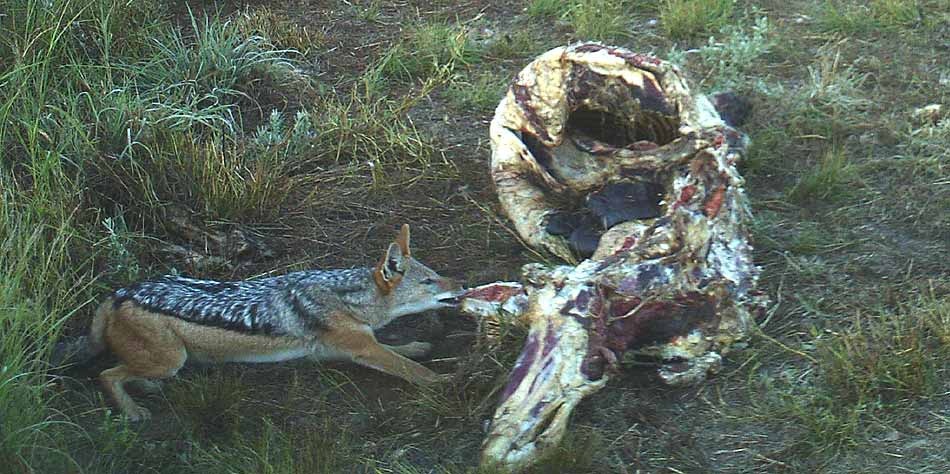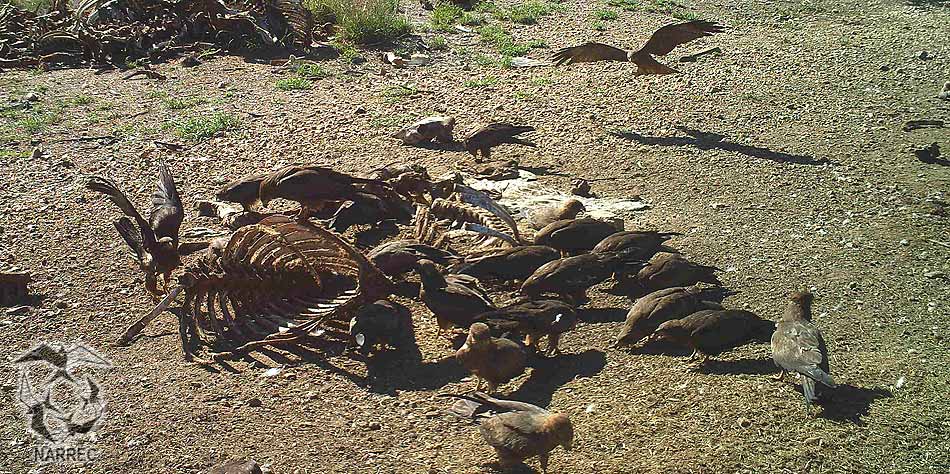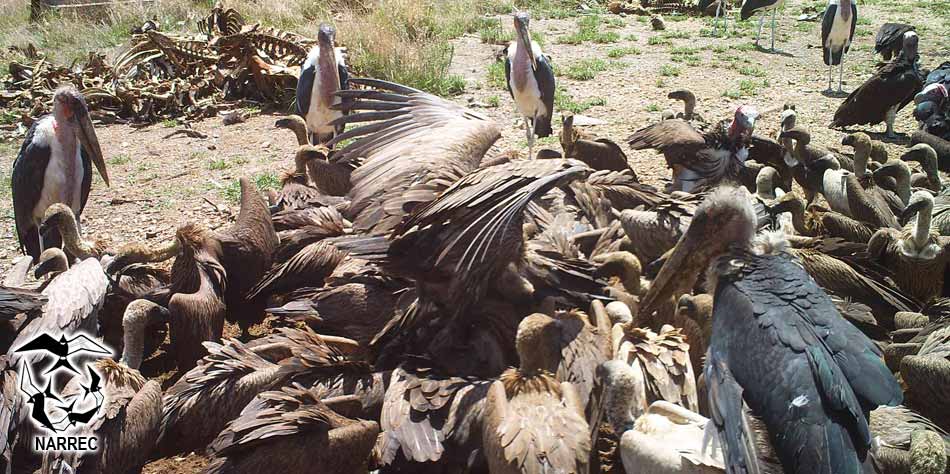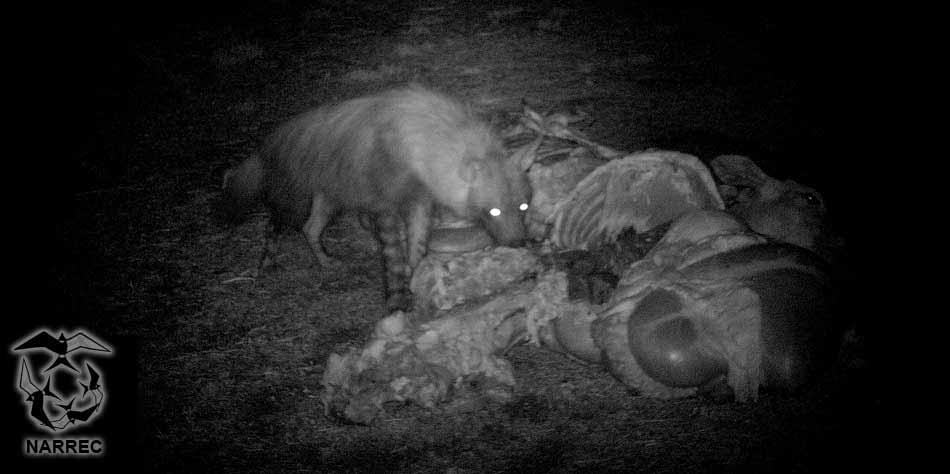
The global crisis for large scavenging birds of prey cannot be overemphasized. Not only are known threats to these species being amplified across countries and continents, but new threats are constantly emerging as well. Unfortunately, the overarching root cause is actions by people, some deliberate, some inadvertent, and the only solution can lie in deliberate conservation strategy, dissemination of information regarding the required strategies and cooperative action from land managers.
Marking birds is undertaken in order to monitor individuals and populations. This helps to extrapolate the risks that threaten or potentially threaten a species. Since the first marking of individual Namibian vultures in the 1960s, marking and monitoring of birds in general and vultures in particular, have evolved, especially through technological advances. Today a number of nongovernment organizations as well as officials from the Ministry of Environment and Tourism contribute to the pool of information on vultures in Namibia, vultures in specific regions, global trends of vulture populations, threats to healthy habitats and sufficient uncontaminated food resources for these useful birds.
NARREC has been particularly involved in facilitating advocacy and cooperation to stop the use of poison for lethal predator control on farmlands in Namibia. This advocacy work has resulted in policy changes on the importation, legal prescription and dispensing of poison for predator control. In addition, many informative resources on poisons, pesticides, livestock predators and birds of prey have been distributed free of charge. The various publications are listed in ‘Publications’in this web site.
Another of NARREC’s contributions towards biodiversity safety is the maintenance of a vulture restaurant or feeding station. At NARREC all building work is done with a low construction impact objective. Stamped earth with a cement strengthener, NARREC’s preferred and most applied building method, could not be used for the vulture monitoring hide as the site’s available resources dictated something different. Daniel Komen designed a sandbag construction for the hide, using natural schist rock from the surrounds for the floor. The site itself was chosen because of the existence of a 60-year-old, leaky metal reservoir which provided the outer skin of the building. The sandbag construction method allowed for easy and inexpensive use of the available sand resource. At the same time, by excavating for sand, a nearby, natural summer waterhole was enlarged. The sandbags have created a functional and pleasantly insulated indoor space.
Wild, free-flying vultures have been fed at NARREC for some years but since building the monitoring hide the feeding frequency has taken on a greater intensity. Because it is not always possible to have people at the hide for every feed and duration of each feed, a Bushnell Census Camera is used to capture the feeding activity when a carcass is placed at the restaurant. The photographic records have provided some useful sighting of birds and their behaviour, and have also given necessary feedback on birds with wing tags and leg rings.
Additional information about establishing a vulture restaurant can be dowloaded here.

